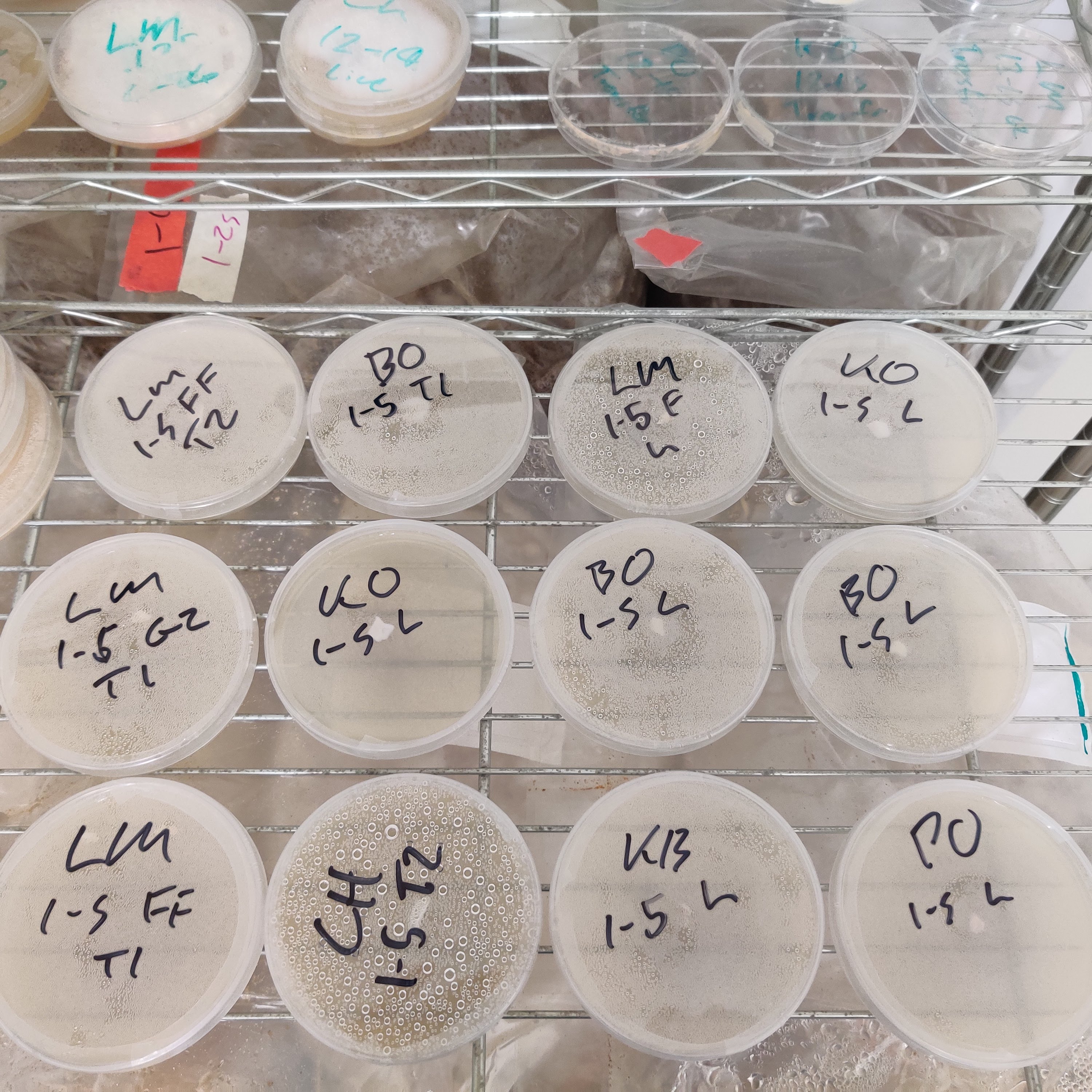A colonized agar culture petri dish is a tool used in mycology to grow and study fungi. The dish consists of a shallow, circular container, typically made of glass or plastic, with a removable lid. The container is filled with a nutrient-rich agar medium, which provides the necessary nutrients for the fungi to grow and multiply.
In order to create a colonized agar culture, a small amount of spores or mycelium from a fungi species is added to the agar medium in the petri dish. This is typically done by taking a small amount of spores or mycelium from a previous culture, and using a sterile tool to transfer it to the new dish. The lid is then placed on the dish, and the culture is incubated under conditions appropriate for the specific fungi species.
As the culture grows, the mycelium will colonize the agar medium, forming a visible layer on top of it. The mycelium will also reproduce, creating new colonies of the fungi. The culture can be observed over time to study the growth patterns and characteristics of the fungi.
Colonized agar culture petri dishes are widely used in mycology for various purposes such as isolating pure strains of fungus, studying the growth and morphology of fungus, and also for the production of spawn for cultivation of edible and medicinal mushrooms. These petri dishes are also used in research and academic settings, as well as in industry, for tasks such as identifying and characterizing new fungi species, testing the effectiveness of fungicides, and developing new methods for mushroom cultivation.
It’s important to note that aseptic technique should be used when handling agar culture petri dishes, to avoid contamination of the culture and ensure the accuracy of results. This includes wearing gloves, using sterile tools, and working in a clean environment.



Reviews
There are no reviews yet.